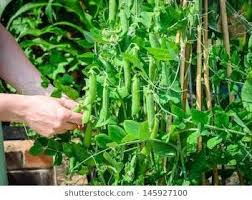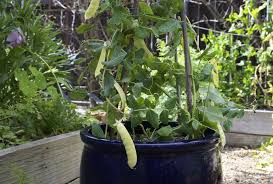Garden peas, which include shell peas, snow peas, and snap peas, are fantastic crops for a productive and efficient garden. Their unique growing habits allow for creative planting strategies, such as intercropping (planting multiple crops in the same space) and succession planting (replacing one crop with another during the same growing season). Garden peas offer a wealth of opportunities to maximize garden space, especially given their vertical growth and the fact that they typically finish producing by midsummer, leaving room for another major vegetable.
Each year, I grow all three types of peas. While I never manage to bring shell peas into the kitchen because we eat them straight from the garden, I rely heavily on snap peas for their plump, sweet pods. A good year yields enough snap peas to freeze for the winter months, which is a real treat.
Interplanting with Peas
One of the key advantages of garden peas is that they are climbers, so they need support. Their strong tendrils will cling to almost any structure, allowing you to plant additional crops at their base. The type of trellis you use significantly impacts the effectiveness of interplanting.

For example, if you position a vertical trellis down the center of your bed, the space around the peas (on the outside of the trellis) can be used for other crops. Planting leafy greens like lettuce, arugula, or spinach, or shallow-rooted crops like radishes and green onions, is a great way to utilize this space. I prefer planting leafy greens because they help shade the pea roots and keep them cool. To avoid disturbing the pea plants, I harvest the greens by cutting them at the base rather than pulling them up.
In cases where you plant peas in widely spaced rows, you can set up a slanted, diagonal trellis. This creates a sheltered space in the center of the row, perfect for growing crops like onions or potatoes. In regions with short, mild springs, this method allows for a summer crop of new potatoes, even before the heat sets in.
Succession Planting with Peas
While it’s tempting to wait for every last pea to be harvested, it’s often best to remove peas once they begin to slow down in order to make space for a new crop. After peas, many gardeners, myself included, choose to plant cucumbers or squash, which can use the existing pea trellis for support. Simply snip off the peas at the soil line, leaving their nitrogen-rich roots behind to nourish the new crop.

Peas naturally begin to lose productivity as their pods form mainly at the tips of the stems rather than along the side branches. This signals that it’s time to switch to a new crop. If you’ve interplanted peas with potatoes, it may be necessary to fully remove the pea plants to make way for a new vegetable. In such cases, consider planting carrots, which thrive in the space once occupied by peas. For those in regions with long, pleasant autumns, broccoli is another great succession crop after peas.
Succession planting and interplanting with peas are excellent ways to maximize your garden’s potential. The pea-growing season may be short, but its contributions—both in space utilization and soil enrichment—make it a valuable part of any garden rotation.
